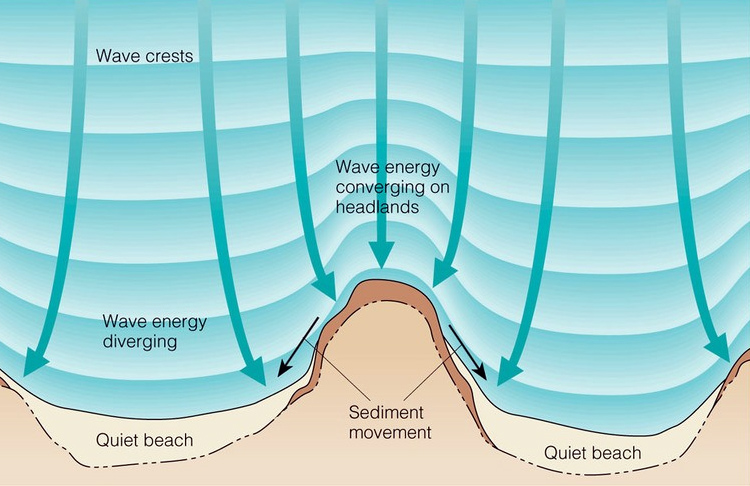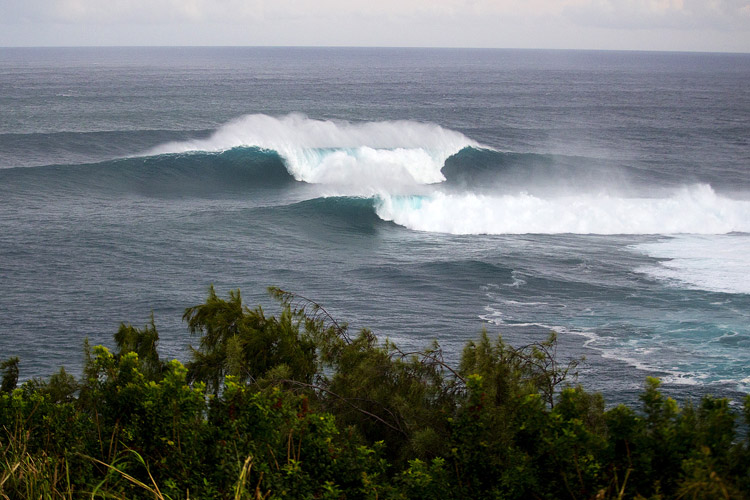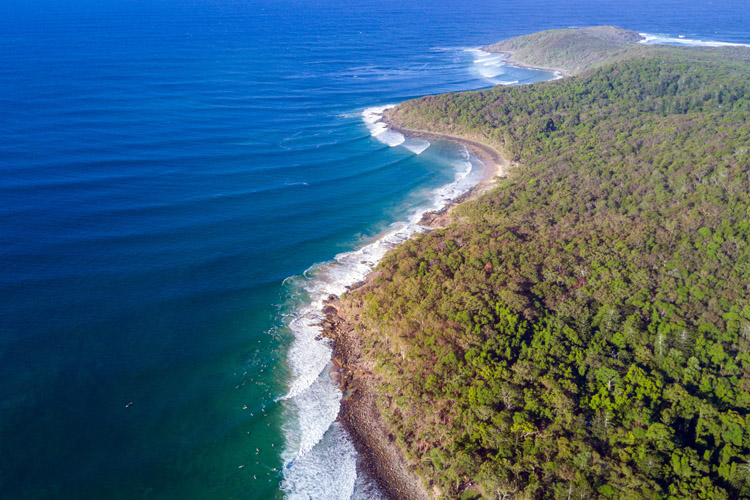Perfect waves are not always a winning combination of wind, swell, and tides. Sometimes, idyllic surf sessions depend on a concept called wave refraction.
In oceanography, wave refraction is the bending of a wave as it propagates over different depths. The concept should be taken into consideration whenever we analyze and read a surf report.
In other words, it is the process by which the direction of a traveling wave is changed due to the interaction with the ocean's bottom topography.
So, what does refraction have to do with the waves that surfers ride? It can do two things: either increase or decrease wave height.
But it can also influence the strength and speed of a breaking wave.
Waves travel thousands of miles in the open ocean before reaching our coastlines. Normally, they arrive at our shores perpendicular to the beach, producing waves that break parallel to the seaside.
However, in some regions of the world, when swell lines reach shallow waters at a different angle, they tend to steer from deepwater areas to shallow water zones.
The phenomenon takes place because shallow water depths actually slow down the wave train while the part of the swell moving over deep waters continues at the same speed.

Waves start to break relatively smoothly in this transition region between deep and shallow waters, creating, in some situations, splendid point breaks for surfing.
As you might have noticed, the topography of the ocean floor is always different from spot to spot. So, refraction molds each surf break uniquely according to its specific natural attributes.
Interestingly, refraction is more noticeable with groundswells and is profoundly affected by the angle of the wave train.
A change in wave period from 10 to 15 seconds or swell angle from 260 to 280 degrees can destroy the conditions at a given surf spot in less than 24 hours.
Focusing (Concave Refraction) and Defocusing (Convex Refraction)
There are two main variables that come into play when we talk about wave refraction: focusing and defocusing.
The first one occurs, for example, when a swell hits a coral reef that sticks out from the shore with an abrupt and deep water channel on one or both sides.
In this particular case, the wave will start bending inwards toward the shallow water zone, concentrating the energy into the center bowl.

This is called focusing, or concave refraction, and it can often be seen in powerful reef breaks like Teahupoo and Jaws or beach breaks with special underwater characteristics like Nazaré.
On the opposite side of the spectrum, a swell reaches a large and shallow water region, typically a bay, it slows down, and the waves will immediately bend outwards.
As they encounter depth changes close to the shore, they will start to break and peel along the shoreline. So, instead of concentrating energy, it spreads energy over large areas.
This is called defocusing or convex refraction and often takes place in point breaks like Kirra, Lynmouth, Bells Beach, and Ericeira.
Classic beach breaks may combine waves with focused (sandbars) and defocused (channels) characteristics, producing perfect A-frames or thunderous closeouts depending on local bathymetric and geomorphological features.
